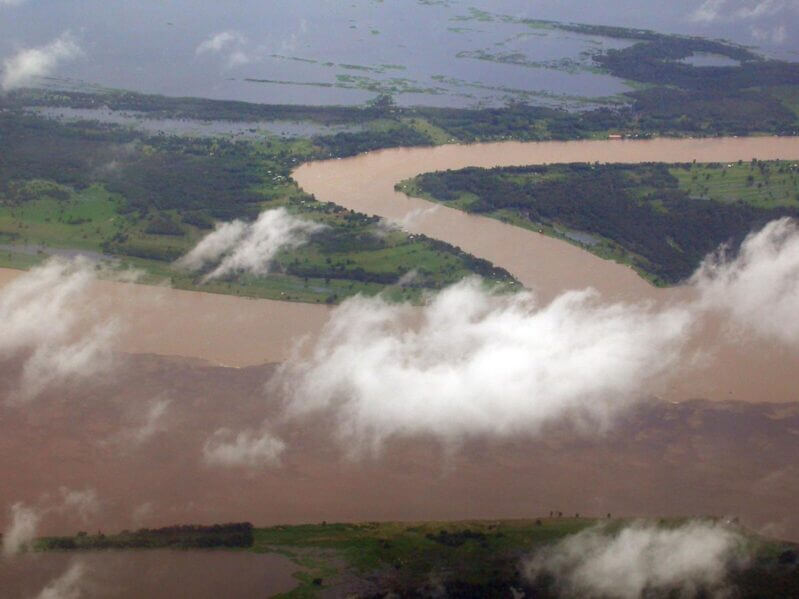Rocks, rain and carbon dioxide help control Earth’s climate over thousands of years — like a thermostat — through a process called weathering. A new study led by Penn State scientists may improve our understanding of how this thermostat responds as temperatures change.
“Life has been on this planet for billions of years, so we know Earth’s temperature has remained consistent enough for there to be liquid water and to support life,” said Susan Brantley, Evan Pugh University Professor and Barnes Professor of Geosciences at Penn State. “The idea is that silicate rock weathering is this thermostat, but no one has ever really agreed on its temperature sensitivity.”
Because many factors go into weathering, it has been challenging to use results of laboratory experiments alone to create global estimates of how weathering responds to temperature changes, the scientists said.
The team combined laboratory measurements and soil analysis from 45 soil sites around the world and many watersheds to better understand weathering of the major rock types on Earth and used those findings to create a global estimate for how weathering responds to temperature.
“When you do experiments in the laboratory versus taking samples from soil or a river, you get different values,” Brantley said. “So what we tried to do in this research is look across those different spatial scales and figure out how we can make sense of all this data geochemists around the world been accumulating about weathering on the planet. And this study is a model for how we can do that.”
Weathering represents part of a balancing act of carbon dioxide in Earth’s atmosphere. Volcanoes have emitted large amounts of carbon dioxide through Earth’s history, but instead of turning the planet into a hot house, the greenhouse gas is slowly removed via weathering.
Rain takes the carbon dioxide from the atmosphere and creates a weak acid that falls to Earth and wears away silicate rocks the surface. The byproducts are carried by streams and rivers to the ocean where the carbon is eventually locked away in sedimentary rocks, the scientists said.
“It has long been hypothesized that the balance between carbon dioxide entering the atmosphere from volcanoes and being pulled out by weathering over millions of years holds the temperature of the planet relatively constant,” Brantley said. “The key is when there is more carbon dioxide in the atmosphere and the planet gets hotter, weathering goes faster and pulls more carbon dioxide out. And when the planet is cooler, weathering slows down.”
But much remains unknown about how sensitive weathering is to changing temperatures, partly because of the long spatial and time scales involved.
“In a soil profile, you are seeing a picture of soil where the camera shutter was open for sometimes a million years — there are integrated processes happening for a million years and you’re trying to compare that with a two-year flask experiment,” Brantley said.
Brantley said the field of critical zone science — which examines landscapes from the tallest vegetation to the deepest groundwater — has helped scientists better understand the complex interactions that influence weathering.
For example, rocks must fracture for water to get in cracks and start breaking down the materials. For that to happen, the rock must have large, exposed surface areas, and that is less likely to happen in regions where soil is deeper.
“It’s only when you start crossing spatial and time scales that you start seeing what’s really important,” Brantley said. “Surface area is really important. You can measure all the rate constants you want for that solution in the lab, but until you can tell me how does surface area form out there in the natural system, you are never going to be able to predict the real system.”
The scientists reported in the journal Science that temperature sensitivity measurements in the laboratory were lower than estimates from soils and rivers in their study. Using observations from the lab and field sites, they upscaled their findings to estimate the global temperature dependance of weathering.
Their model may be helpful for understanding how weathering will respond to future climate change, and in evaluating man-made attempts to increase weathering to draw more carbon dioxide from the atmosphere — like carbon sequestration.
“One idea has been to enhance weathering by digging up a lot of rock, grinding it, transporting it and putting it out in the fields to let weathering happen,” Brantley said. “And that will work — it’s already working. The problem is, it’s a very slow process.”
Though warming may speed up weathering, pulling all the carbon dioxide out of the atmosphere that humans have added could take thousands or hundreds of thousands of years, the scientists said.
Other Penn State researchers who participated on the study were Andrew Shaughnessy, doctoral candidate in the Department of Geosciences and Marina Lebedeva and Victor Balashov, senior scientists in the Earth and Environmental Systems Institute.
The National Science Foundation and the Hubert L. Barnes and Mary Barnes Professorship supported this work.

